Editor of this issue: Antanas Klimas, University of Rochester
Copyright © 1990 LITUANUS Foundation, Inc.

|
LITUANUS
LITHUANIAN QUARTERLY JOURNAL OF ARTS AND SCIENCES
Volume 37,
No.4 - Winter 1991
Editor of this issue: Antanas Klimas, University of Rochester ISSN 0024-5089
Copyright © 1990 LITUANUS Foundation, Inc. |

|
LITHUANIAN ART: MYTHOLOGICAL AND METAPHYSICAL ABSTRACTION
IN THE ART OF DONALD KARVELIS
Margaret L. Henrikson
Donald Karvelis is a painter whose personal mythology is deeply rooted in his Lithuanian ancestry. The artist's imagery grows from a shared heritage in which icons and symbols not only represent reality but they are their own reality. The use of totemic shapes in his work produces an archetypal truth, pervasive in the myths and legends of Lithuania, and commanding in terms of contemporary consciousness.
Fascinated by cultural anthropology, Karvelis' contemporary forms ask of their ancestors what was life like in the Bronze Age or the Stone Age? His iconography is by way of Old European artifacts. These figures evoke an ancestral recognition and open an inner door to the psyche. Just as Marija Gimbutas' "The Language of the Goddess" accompanies the artist's easel, and recordings of American Indian music and Lithuanian folk music fill his studio, ancient rhythms resound in Karvelis' work.
The artist's job, as he sees it, is to set a stage where meaning can happen. He has set forth on a path into the unknown, a creation from the depths of his soul, so that the work itself is the meaning, not requiring literary interpretation. In this way, his work provides a direct experience for the viewer.
The recent works of Donald Karvelis will be on exhibit throughout the Baltic States and Europe this year. The group of paintings includes work with deep color and dominant totemic figures. Karvelis' earlier work seems to have conceived of this imagery. Recurring themes are the balance of composition, the dark canvas, and his unique iconography. The new canvases centralize the subject, creating vast space inhabited by monolithic symbols.
The images in Karvelis' work appear three-dimensional. The scale is indeterminate with upper and lower reaches beyond the picture field. The shapes seem familiar, totally frontal and therefore confrontational. In the work "Untitled: 69-Cl" we sense that directness with an almost menacing tone. Sharp barbs protrude from a central core and project aggression. The richness of color is highlighted by an aura emanating from a place behind the subject. In "Untitled: 65-Cl" this aura becomes a glow, drawing the eye upward with expectation. This work shimmers with hope looking skyward to the heavens.
In other works, the monolithic subjects convey a sense of emergence and movement. The haunting "Untitled 36-Cl" seems to be growing upward like a construction of atomic particles. The spiraling "Untitled 67-Cl" has a tubular shape circling the central trunk which pulls the viewer along. The openness of the horizon and the ambiguity of subject definition evoke a surreal and perhaps magnified world, as if we are exploring an inner truth being born. One's own experience looms large in this act of creation, and there is no beginning or end.
The show exemplifies the artist's own philosophy that art is a cyclic communication. The sharing of communication is a social process which the artist interprets and then returns to society through his art. In Karvelis' work we recognize shapes and forms and identify emotional moods from the canvas, and still the interpretation is left to our own experience. Parts of the work are intuitively understood and others are more obvious references to symbols known. From this comes a new perspective of visual reality. In the end, we examine our own surroundings with elements of the subconscious brought to the surface.
Donald Karvelis is an artist whose ties to the inner world are manifest in his artwork. His interest in the cultural history of Lithuania led him to discoveries of strikingly similar motifs within a common visual language. He has taken this cultural thread, inherent in his emotional and intellectual life, and woven a fabric of communication through his art. The images we are confronted with speak of strength and independence, the same qualities at the heart of Lithuania's past and future.
Margaret L. Henrikson has a BA in Art History from Hampshire College and has curated exhibits in New York City and Southern California. Most recently she was Gallery Director for Sata Fine Art Gallery, Costa Mesa, California.
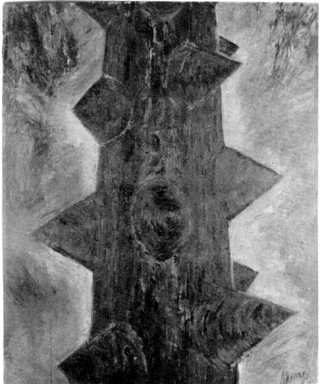
Donald Karvelis "untitled: 69-C1" 1991
82"x70", acrylic / canvas
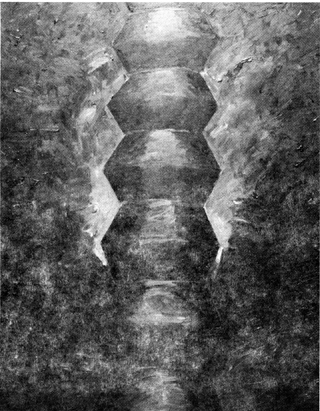
Donald Karvelis "untitled: 36-C1", 1989
78"x70", acrylic/canvas
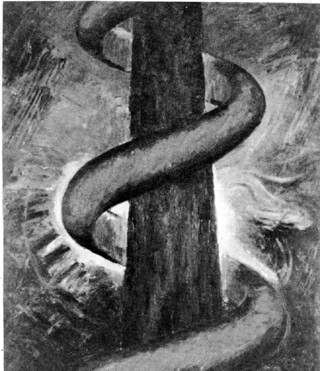
Donald Karvelis "untitled: 67-C1", 1990
82"x70", acrylic/canvas
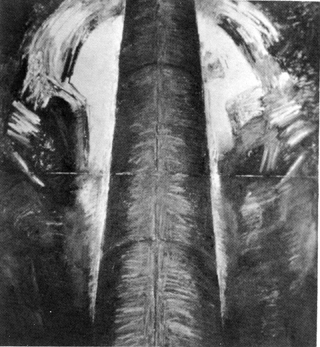
Donald Karvelis "untitled: 65-C1" 1990
108"xl00", oil/paper
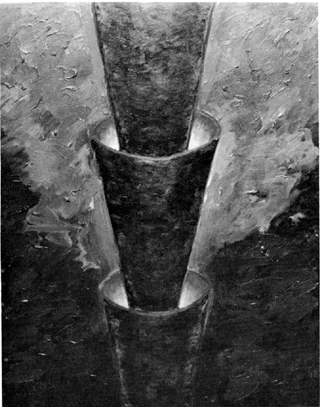
Donald Karvelis "untitled: 45-C1", 1989
59"x48", acrylic/canvas
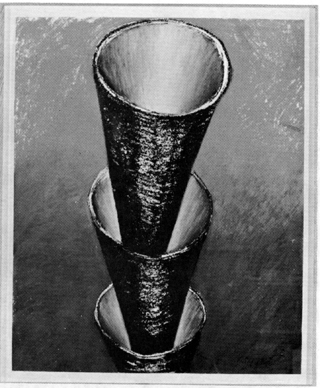
Donald Karvelis "untitled: 9-C1", 1988
50 1/2 "x42 1/2", paintstick & charcoal/paper